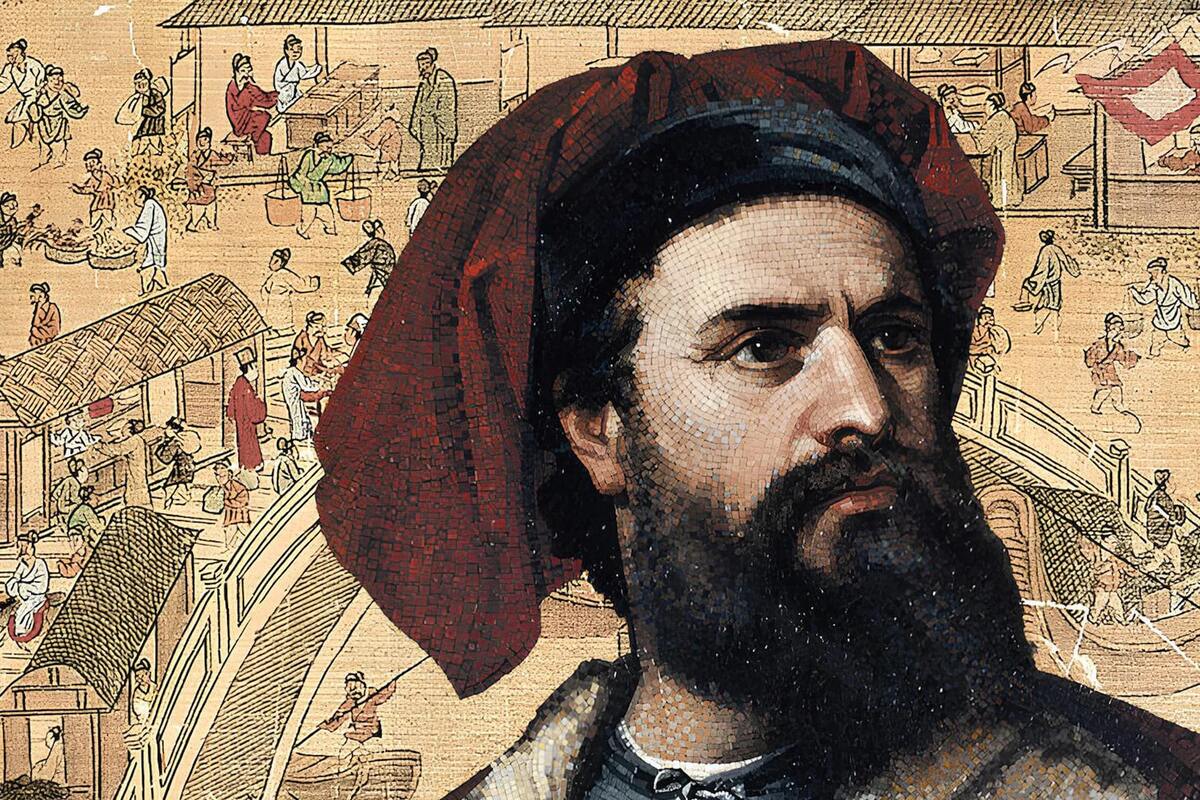Marco Polo is one of the most renowned travelers of the Middle Ages, and his name has become synonymous with exploration and discovery of distant lands. His journey to China through Asia continues to captivate minds today, as he was one of the first Europeans to leave a detailed record of life in the East. His stories, compiled in The Travels of Marco Polo, opened a window to the unknown world for 14th-century Europe. These interesting facts about Marco Polo will reveal many lesser-known details about this remarkable figure.
- Marco Polo was born around 1254 in Venice into a merchant family. His father Niccolò and uncle Maffeo had already traveled to Asia and were among the first Europeans to meet the Mongol ruler of China, Kublai Khan. They returned to Italy when Marco was about 15 and soon embarked on another journey, taking him with them.
- His epic journey to Asia lasted 24 years. During this time, Marco Polo traveled over 24,000 kilometers across land and sea through the Middle East, Persia, Central Asia, and eventually reached China. His route covered the territory of more than 20 modern countries.
- In China, Marco Polo served at the court of Kublai Khan as an emissary, official, and trusted advisor. His linguistic skills, keen observation, and diplomatic abilities made him a valuable member of the imperial administration. He traveled extensively across Chinese provinces, carrying out important missions.
- While in China, Marco Polo encountered technologies and customs completely unknown in Europe. He described the use of paper money, an advanced postal system with relay stations, the burning of coal for fuel, and cities with sanitation systems and massive stone bridges. These accounts sounded fantastical to his European contemporaries.
- Many people in Europe did not believe his stories, considering them too incredible to be true. Critics thought he had invented them, as knowledge about China and India at the time was extremely limited. However, many of the details he described were later confirmed by archaeologists and historians.
- After returning to Venice, Marco Polo was captured by the Genoese during a war between Venice and Genoa. While in prison, he recounted his adventures to a fellow inmate, a writer named Rustichello of Pisa. Rustichello compiled these accounts into the book later known as The Travels of Marco Polo or The Book of Marvels.
- In his book, Marco Polo described not only China but also India, Indonesia, Mongolia, Iran, Central Asia, Tibet, and even Japan, though he likely never visited the last one. His descriptions became vital sources for European cartographers for centuries. They also inspired Christopher Columbus to pursue his journey westward to reach Asia.
- Curiously, Marco Polo never mentioned the Great Wall of China in his writings. This omission continues to puzzle historians, as the wall existed during his travels. It may have been in disrepair or simply not considered significant by Polo at the time.
- In China, he is known as Ma Ke Bo Luo, and there is a street named after him in Beijing. Books with illustrated versions of his travels have been published in China, although many of them mix fact with fiction. In 1995, China and Italy issued a joint commemorative stamp to mark the 700th anniversary of his return.
- Some modern scholars question whether Marco Polo ever reached China, noting the absence of references to tea, Chinese writing, gunpowder, and other cultural features. However, most historians believe he did reach China but wrote from a European perspective. It is also possible that later editors added or omitted parts of his story.
- After returning home, Marco Polo became a wealthy merchant, married, and had three daughters. He never traveled far again but maintained contacts with other traders and adventurers. Until his death in 1324, he never denied the truth of his accounts, even when asked to confess they were fictional.
- Marco Polo was one of the first Europeans to bring a detailed picture of Asia to the Western world. His writings included not only material descriptions but also insights into religion, customs, legal systems, and cultural life. His contribution to geography, ethnography, and European understanding of the world was immense.
- His book was first printed in the 15th century after the invention of the printing press. It quickly became a bestseller and spread across Europe. During the Middle Ages, it was read as an adventure tale, though it had a significant impact on the development of scientific thought.
- Many places and objects have been named after Marco Polo, including the Venice airport, cruise ships, commercial brands, geographic locations, and even a crater on the Moon. His name has become a symbol of exploration in many languages. He appears frequently in literature, films, cartoons, and television series.
- In 2014, a joint American-Chinese television series titled Marco Polo was released, portraying his adventures at the Mongol court. Though the series includes fictional elements, it introduced his legacy to a new generation. His image continues to inspire explorers and adventurers today.
Marco Polo was not merely a traveler but a bridge between civilizations. His keen observations, openness to different cultures, and passion for discovery made him a unique figure in world history. These interesting facts about Marco Polo show how personal journeys can shape human understanding and progress. You may not have known that one man helped transform how an entire continent viewed the rest of the world.





